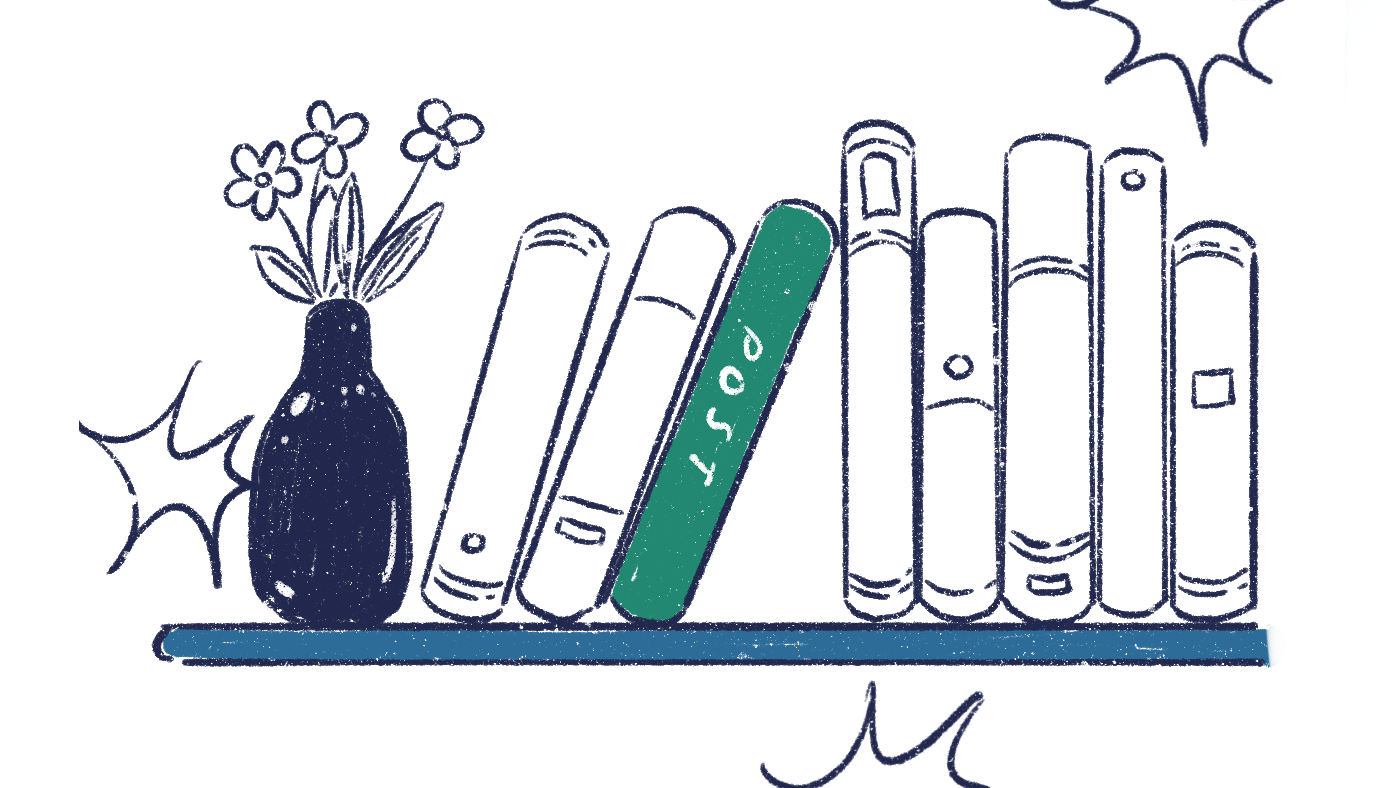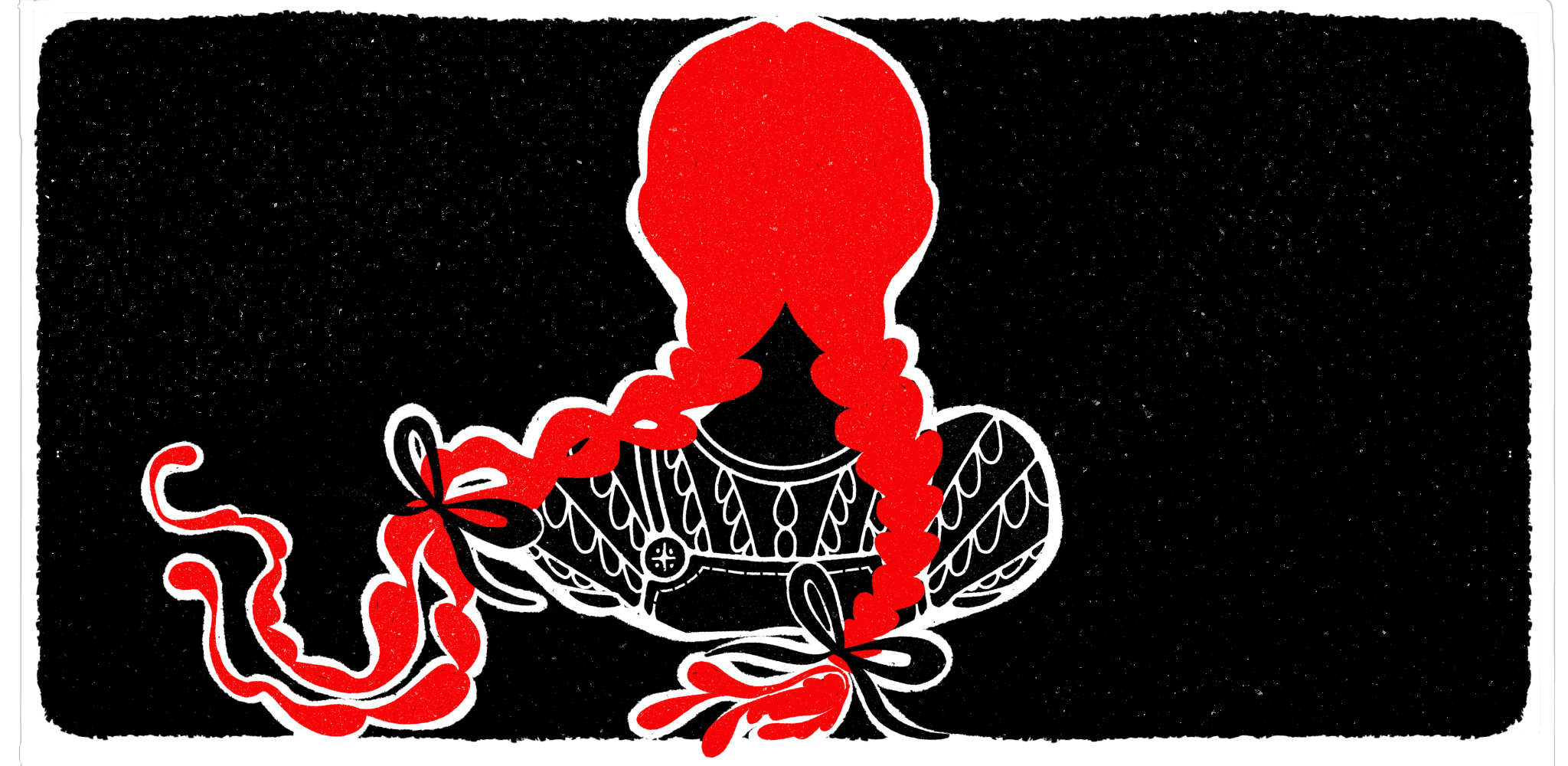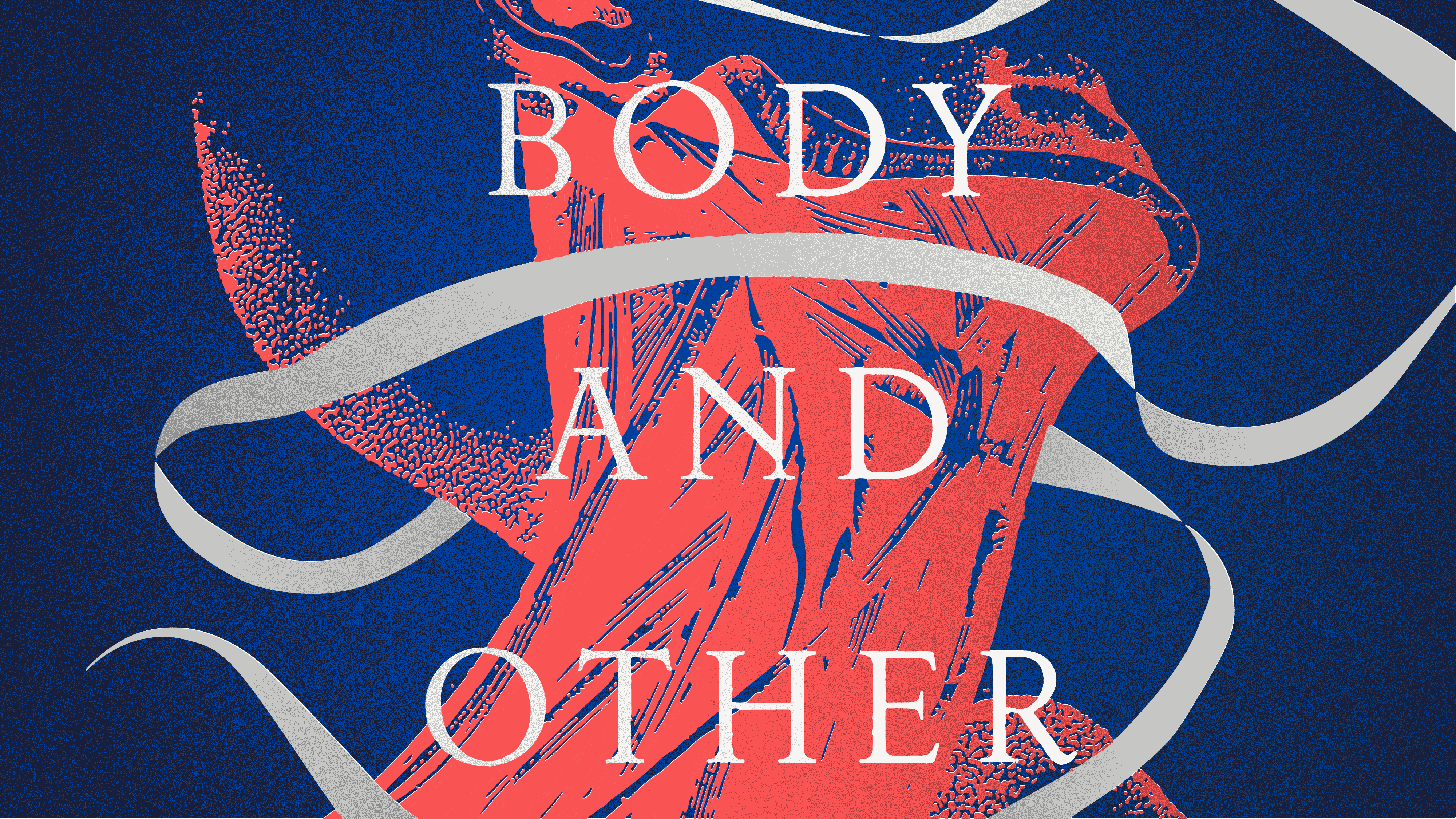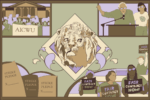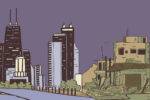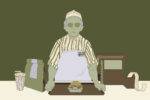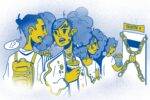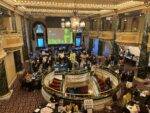My favorite painting at the moment is a hand-painted sign boarding up the window of a closed Korean café four blocks from my apartment. It has a viridian green background and, stretching from end to end, a shallow white smile that could also be the bottom of a roughly drawn sailboat, or a closed eyelid, or a vessel. In a gallery, we’d call it minimalist; in situ, its graphic openness is thoughtful and unexpected, undermining both its commercial setting and the white cube.
I am reluctant to say much about the sign because I am afraid my mind will intellectualize (and ruin) what draws me toward it in the first place. It feels like magic to find an artwork that replaces my center of gravity before my brain can say “duh.” Writer María Gainza uses this phenomenon as an indicator of art whose import will reverberate throughout a lifetime, and, in her recent novel, carefully traces the echoes.
Gainza’s first novel published in English, “Optic Nerve” (translated by Thomas Bunstead), is a winding piece of autofiction fueled by a sensitive concentration on the qualities of art that keeps us apprised of ourselves. The book is narrated by a woman named María who also shares a profession and locale with the author: Both are art critics living in Buenos Aires. This is typical in autofiction, in which elements of the author’s life are applied to their protagonist and the distinction between fact and fiction is left murky. In “Optic Nerve,” it seems safe to assume Gainza, the author, has imbued María, the character, with her own artistic taste.
We learn about María through episodic retellings of different periods in her life, which Gainza comingles with the biographies of canonical painters. A winter trip as a teenager to a dilapidated family beach house churns alongside a brief history of the painter Gustave Courbet. In Gainza’s world, artists like El Greco and Henri Rousseau feel fresh as she turns to scenes from their personal narratives, when they were not yet the beneficiaries of esteemed positions in the Western canon, but flawed people who faced rejection and isolation.
Early in the novel, María recounts giving a tour of a private collection where she is asked to speak about a painting. She neither likes nor recognizes the image, and she fumbles her delivery. Five years later, she finds herself drawn to a different painting by the same artist, 19th century painter Alfred de Dreux, who painted animals and hunting scenes for noble clients. María is unsettled by what she admits to be a formally conventional painting: framed by a lame landscape, a pack of hounds has caught a deer whose tongue lolls out of its mouth as the dogs sink their teeth into its flank. “It reminded me that all of art rests in the gap between that which is aesthetically pleasing and that which truly captivates you,” Gainza writes. The chapter concludes with a story in which a college friend visiting family in France, while strolling along the edge of a hunting reserve, is killed by an errant bullet. Gainza writes this vignette with propulsion and acuity. She makes the case for attending to that gap as rigorously as possible.
Argentina’s history of economic turbulence goes unnamed, but is reflected through the diminished position of María’s wealthy family. She speaks to her own unshakeable sense of security that “the money will come from somewhere” even after the money is gone. Her mother in particular is eccentric and out-of-touch. When there is a small fire in their home, María becomes anxious after everyone is evacuated and her mother is not among them. She had run off to the embassy, which is housed in the mansion that used to be her childhood home. Later, her mother is trapped under a large mirror that falls as she is grabbing a book to lend the porter — “Los Que Mandan” (The Ruling Class), by José Luis de Imaz. The scene is an eager allegory for one woman’s delusions of power.
Where does that leave María? Gainza keeps her isolated by the nature of the way the book is written. Almost everything we learn about her life is written as a memory, and often in the second person. It feels simultaneously remote and personal. In contrast to her mother, she is unburdened by politics directly, embodying the last vestiges of the class she was born into by enacting its most passive form of power.
María makes her way to museums and galleries with a singular drive that is foiled only by a debilitating fear of flying that materializes at age twenty-five. Her family belittles her circumstances, explaining that Buenos Aires is not an art world center (“great artists, yes, but none of their great works,” they tell her). But María, already aware of this disadvantage, is confident that she has imagination on her side. Treating artworks with the casual familiarity of friendship, she returns to the same paintings over and over. Gainza illustrates an obsessive kind of looking that likens observation to creation, which is, of course, the basis of art criticism.
María’s fear of flying is paired with an account of Rousseau and the 19th century’s fascination with hot-air balloons. It consolidates the book’s themes about finding oneself to be a perpetual outsider and the practice of introspection as a generative act. María wonders to herself, “maybe you’ve just convinced yourself, in line with your progressive and alarming tendency to limit your own means, that big planes and great works are unnecessary.” Rousseau does not suffer the same sense of self-sabotage. A member of the “French Cloudgazing Society,” he was enamored with the sky. But Rousseau remained confined to the ground his entire life, never stepping foot inside a hot-air balloon basket. Lacking experience in the air did not stop Rousseau’s enchantment, and around 1905 the artist painted a dreamy portrait of his late father. The man’s visage is level with the viewer’s eye, serene among the clouds.
“Optic Nerve” declares that intellectualizing our personal taste is insufficient when an artwork’s magnetic pull is felt, first, in the body. María describes this sensation, concluding, “I have learned to respect this twinge, to pay attention to it, because my body always works things out before I do.” Art harbors sensations that can burrow into us, perhaps most often through those sensitive ocular organs. Indeed, the job of the optic nerve is to send information from our eyes to our brain, but Gainza elucidates how it can bypass intellect altogether and dissolve straight into our sense of self. For her, looking is akin to obsession, mania, and therapy. It carries a potency that lends itself to addiction. Needless to say, I want in.




